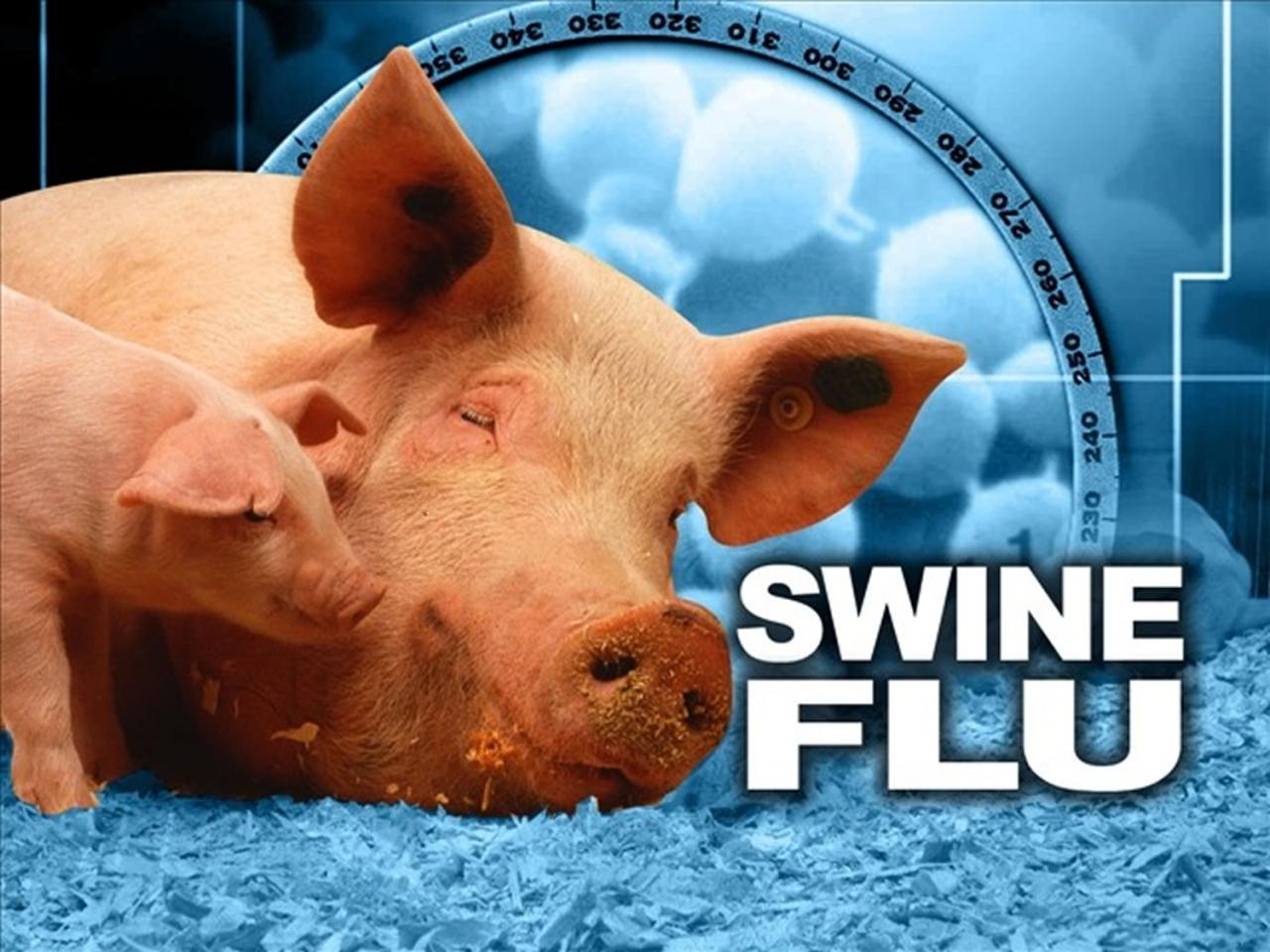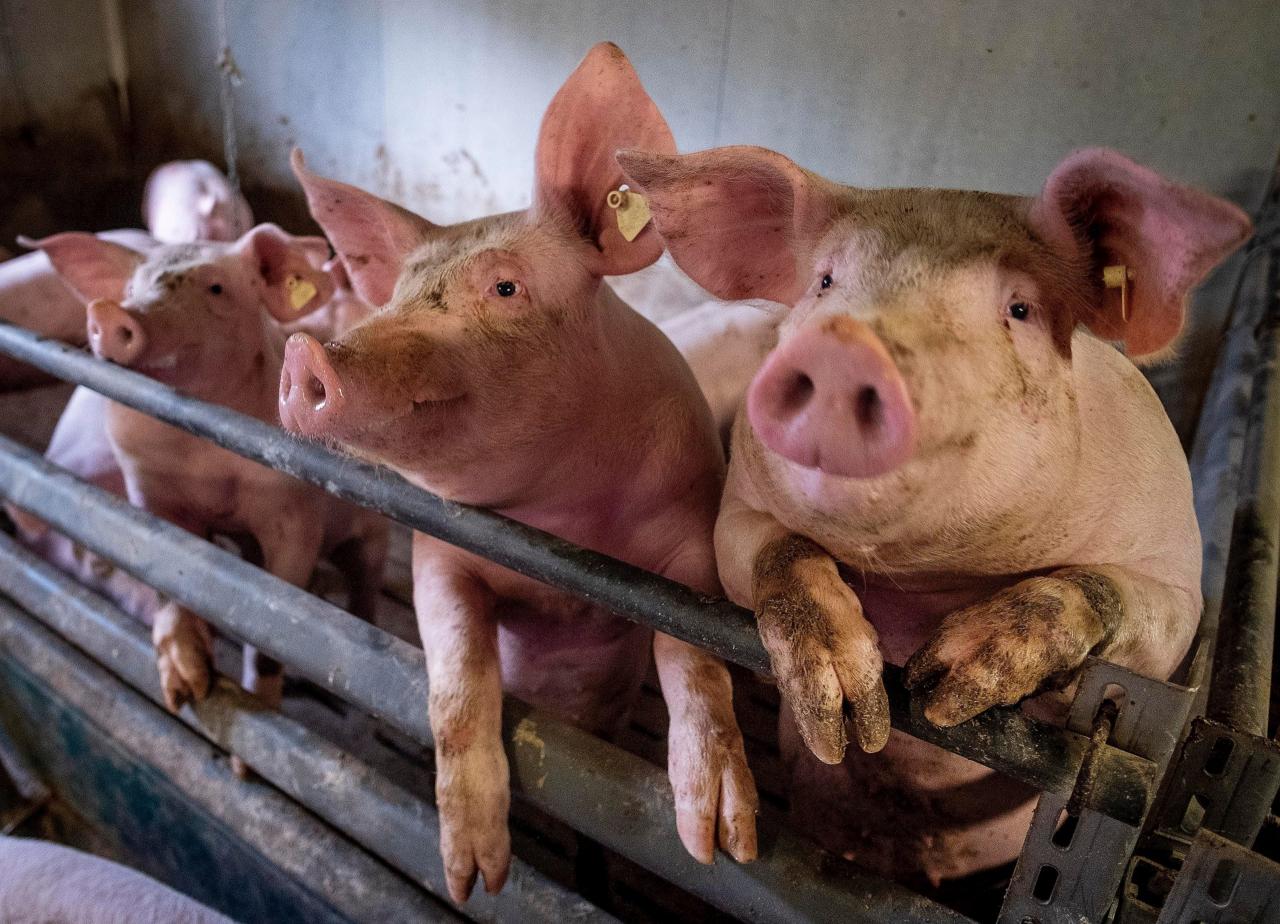
Swine flu, a respiratory infection caused by influenza viruses that primarily affect pigs, has gained significant attention due to its potential to spread to humans. This article delves into the characteristics, transmission, and impact of swine flu, providing a comprehensive overview of this complex health issue.
The highly contagious nature of swine flu, its ability to cause severe respiratory complications, and its economic and social consequences make it a topic of utmost importance for public health officials and individuals alike.
Swine Flu Overview

Swine flu, also known as swine influenza, is a respiratory disease caused by type A influenza viruses that typically infect pigs. These viruses can occasionally spread to humans, causing illness ranging from mild to severe. Swine flu viruses are constantly evolving, and new strains can emerge with the potential to cause pandemics.
Swine flu is primarily transmitted through contact with infected pigs or their secretions. It can also be transmitted through contact with contaminated surfaces or objects. The virus enters the body through the nose, mouth, or eyes and infects the cells lining the respiratory tract.
Symptoms of swine flu are similar to those of other influenza viruses and may include fever, chills, cough, sore throat, runny nose, muscle aches, and fatigue. In severe cases, swine flu can lead to pneumonia, respiratory failure, and even death.
Prevention and Treatment of Swine Flu

Preventive measures to avoid swine flu infection include:
- Avoiding contact with infected pigs or their secretions
- Washing hands frequently with soap and water or using alcohol-based hand sanitizer
- Covering the nose and mouth when coughing or sneezing
- Staying home from work or school if sick
Antiviral medications, such as oseltamivir and zanamivir, can be used to treat swine flu. These medications are most effective when taken within the first 48 hours of symptom onset.
Vaccination is the most effective way to prevent swine flu. The swine flu vaccine is updated annually to protect against the most common strains of the virus.
Impact of Swine Flu

Swine flu outbreaks can have a significant economic impact. The 2009 H1N1 swine flu pandemic, for example, is estimated to have cost the global economy billions of dollars in lost productivity and healthcare costs.
Swine flu can also have social and psychological effects on communities. During an outbreak, people may be afraid to go to work or school, and businesses may close. This can lead to social isolation and anxiety.
Swine flu can also have global health implications. The 2009 H1N1 swine flu pandemic, for example, spread to over 200 countries and territories, causing an estimated 18,500 deaths.
Historical Perspectives on Swine Flu
The first known swine flu outbreak in humans occurred in 1918, during the Spanish flu pandemic. The H1N1 virus responsible for the Spanish flu pandemic originated in pigs, and it is estimated to have killed between 50 and 100 million people worldwide.
Since then, there have been several other swine flu outbreaks in humans. The most recent major outbreak occurred in 2009, when the H1N1 swine flu virus spread from Mexico to over 200 countries and territories.
Swine flu viruses are constantly evolving, and new strains can emerge with the potential to cause pandemics. It is important to be aware of the risks of swine flu and to take steps to protect yourself from infection.
Current Research and Developments

Researchers are constantly working to develop new diagnostic techniques and treatments for swine flu. New vaccines are also being developed to protect against the most common strains of the virus.
One promising area of research is the development of universal influenza vaccines. These vaccines would be effective against all strains of influenza virus, including swine flu. Universal influenza vaccines could help to prevent future pandemics.
Another area of research is the development of antiviral drugs that are effective against all strains of influenza virus. These drugs could be used to treat swine flu and other influenza infections.
Concluding Remarks
Swine flu remains a significant public health concern, and ongoing research efforts are crucial to developing effective prevention and control strategies. By understanding the causes, transmission, and impact of swine flu, we can better prepare for and mitigate the potential risks associated with this virus.





